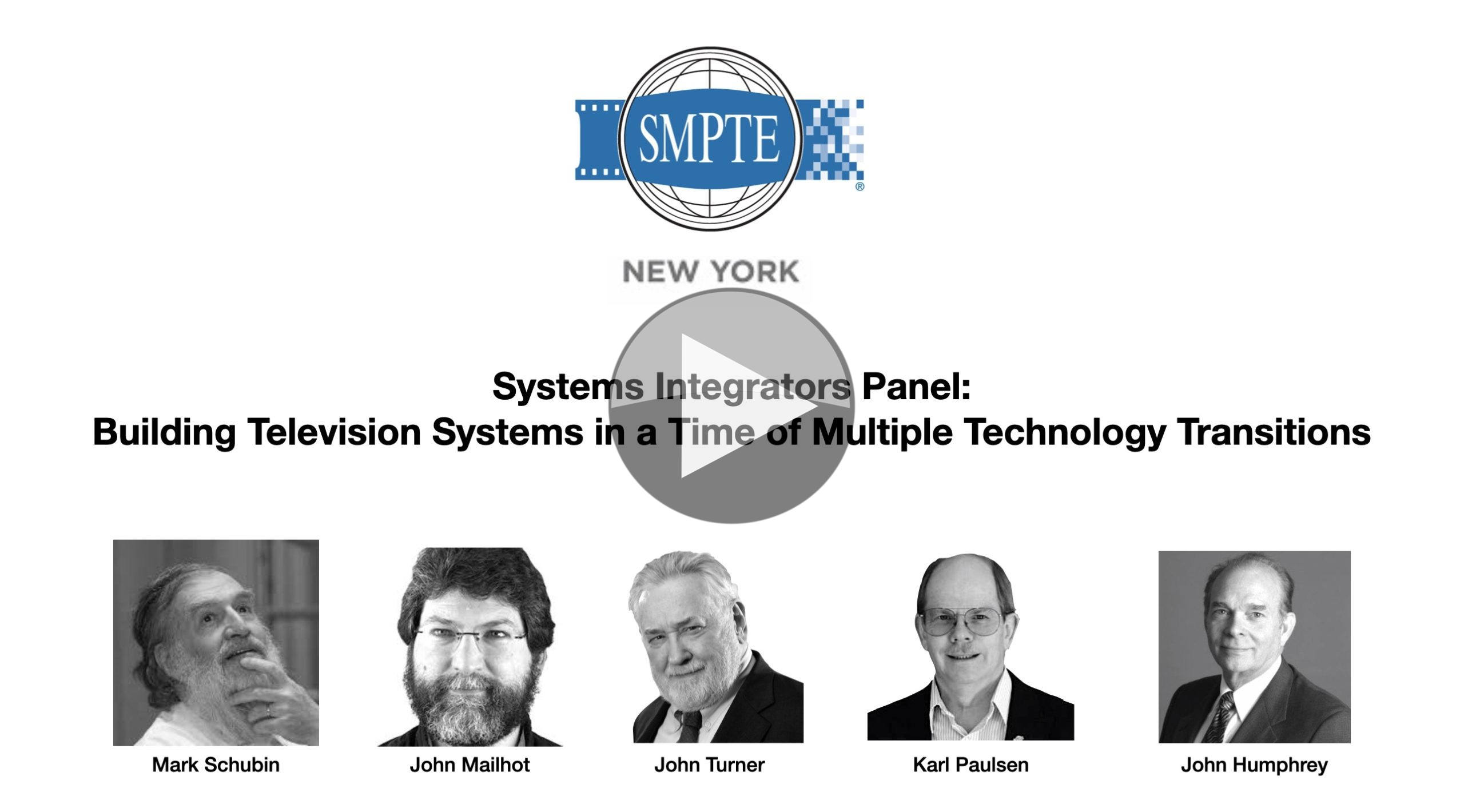Major technology transitions can be hard to keep up with, and when you have a project requiring you decide which one to go with, it can seem unmanageable. This panel put together by SMPTE New York looks gives the view from System Integrators on how to make this work and cover their experience with a wide range of new technologies.
SMPTE ST 2110 is an entire paradigm shift
Turning to 5G, Karl answered the question “what are the transformational technologies”. For some applications, for instance, back of the camera RF in a stadium, 5G is a major leap compared to microwave packs, but early on in a technology’s life, like we are with 5G, it’s a matter of working out where it does and where it doesn’t work well. In time, it will probably adapt to some of those other use cases that it wasn’t suited for initially. John Turner highlighted the elements that ATSC 3.0 transforms in a big way. From an RF perspective, its modulation is much stronger and more flexible, that it’s able to drive new business models.
John Mailhot’s view on the transformational challenge is ‘the people’. He puts forward the idea that the technical constraints of router size and max cable length, to name two examples, embedded themselves into the routines, assumptions and architectures that people embody in their work. With SMPTE ST-2110, most of these constraints are removed. This means you are a lot freer to work out the workflows the business wants. The challenge here is to have the imagination and fortitude to forge the right workflow without getting paralysed by choice.
“SMPTE ST 2110 is an entire paradigm shift”, John Humphrey
After responding to the moderator’s question on how much turmoil these transitions are causing, Mark Schubin summarises the situation by saying we need to work out which of the technologies is like a fridge (replacing previous technologies), a microwave (used as well as a conventional oven) and an induction cooker (requires change in cookware, little adoption). John Humphrey adds that ST 2110 is a technology which viewers don’t notice since the visual quality is the same. HDR, is the opposite so they need different approaches.
During the last 45 minutes, the panel took questions from the audience covering how to hire talent, the perspective of younger people on technology, programming specifically made for smartphones, ATSC 3.0 implementation, reliability of home internet, PTP and more.
Watch now!
Speakers
 |
Mark Schubin Consultant & Explainer |
 |
John Humphrey VP, Business Development, Hitachi Kokusai Electric America Ltd. |
 |
Karl Paulsen CTO, Diversified |
 |
John Turner Principal Engineer Turner Engineering Inc. |
 |
John Mailhot Systems Architect for IP Convergence Imagine Communications |


